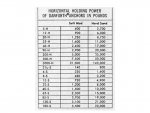Truckoholic
New member
- 492
- 13
- 0
- Location
- Colorado Springs, CO
Ha ha. I bought this property a year and a half ago, and already the trees in the meadow have grown far bigger than they were when I bought the place. Part of me was irritated that my meadow was being overtaken by trees, and I thought about pulling them all out. But at the same time, I thing having a grove of trees on my property later might be more beneficial than having an open field that is too wet to farm anything on anyway.Cool stuff to look out for....Like a little test drive around the place....That what hiways are for....Nice recovery....Going to plant more trees??
And yeah, the only reason I took the little drive around the meadow, was because the truck wasn't registered yet, and I was going to be driving it on the highway the next day for its first time in 5 years after doing a bunch of mechanical work to it, and wanted to make sure things were still looking good.



